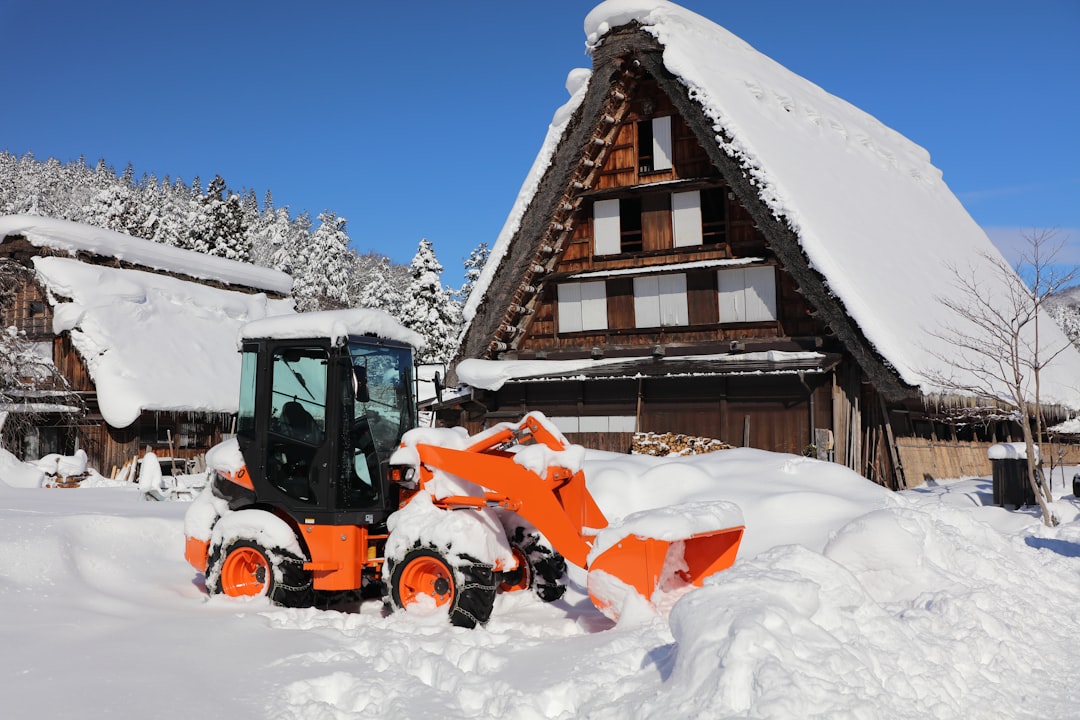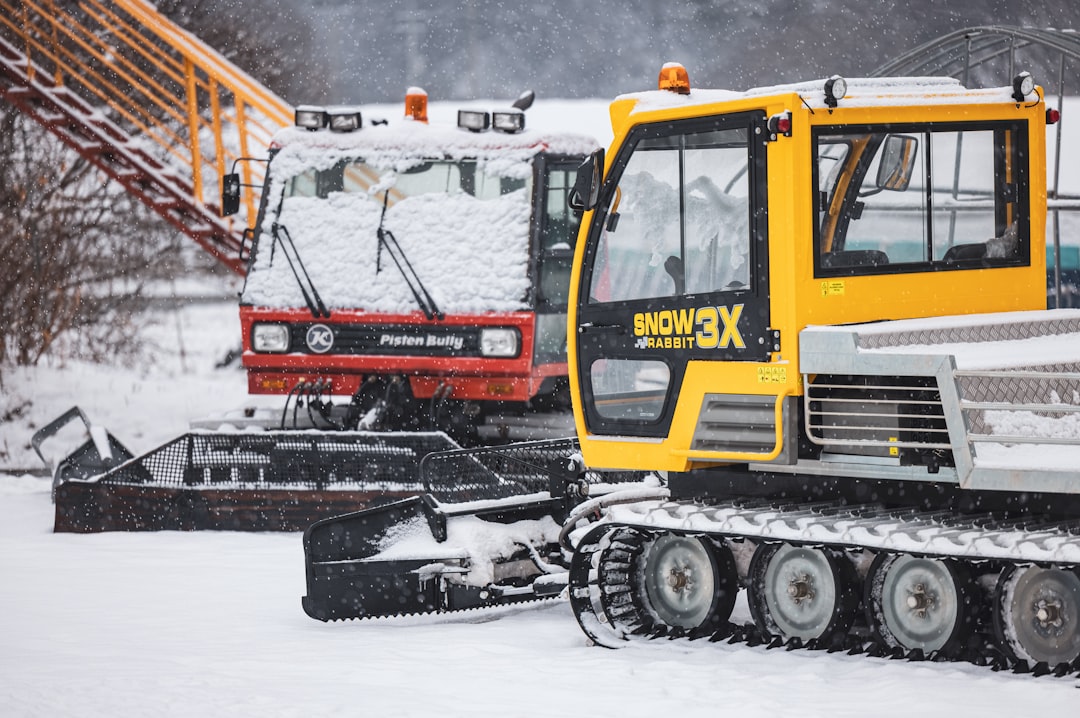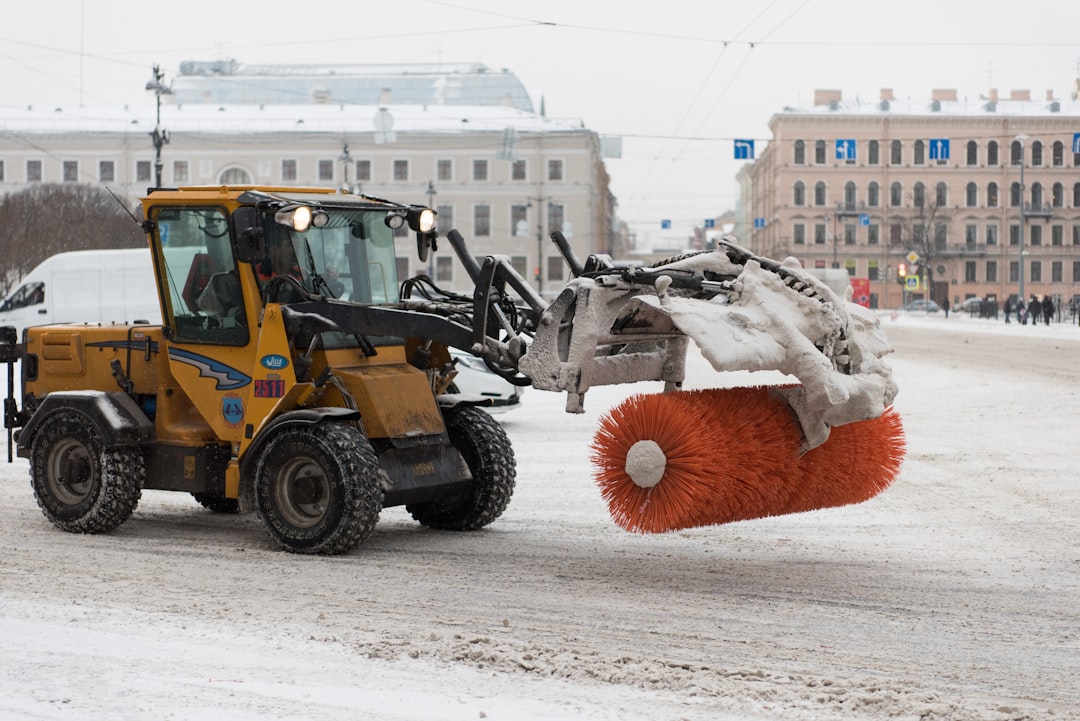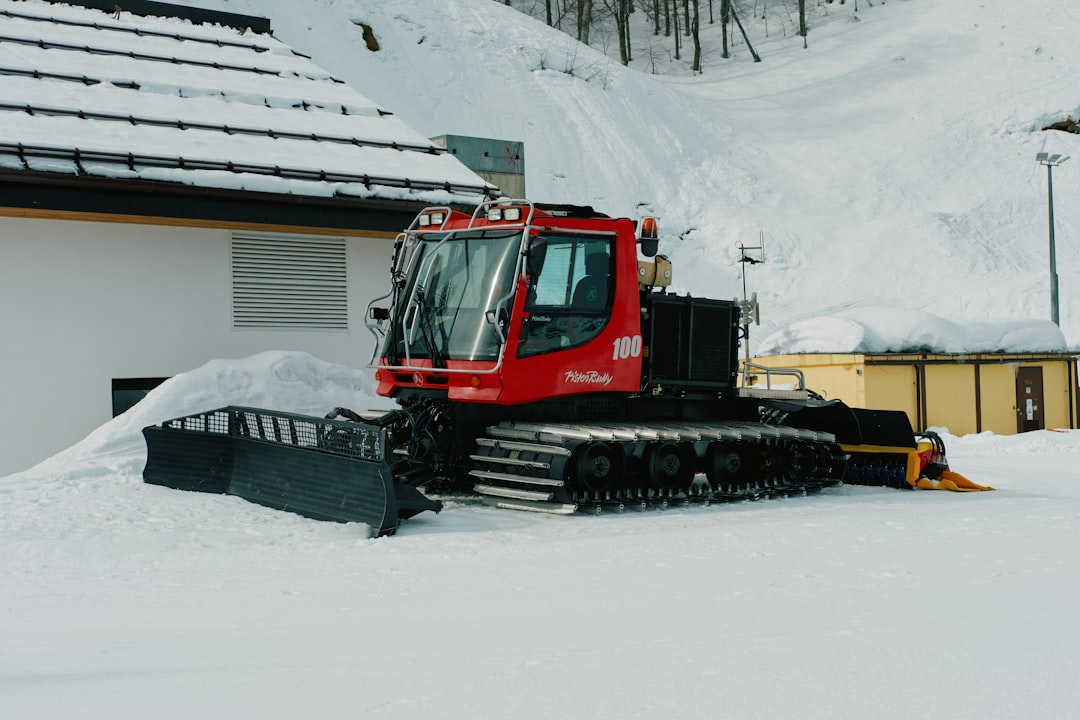

Engage prospects with a scan and streamline customer engagement with FREE QR code marketing tools by Sona – no strings attached!
Create a Free QR CodeFree consultation

No commitment

Engage prospects with a scan and streamline customer engagement with FREE QR code marketing tools by Sona – no strings attached!
Create a Free QR CodeFree consultation

No commitment
In today’s digitally driven world, QR codes have evolved from a novelty into a strategic powerhouse for bridging offline engagement with actionable online results. For commercial snow plowing services, where customer responsiveness, operational efficiency, and sustained revenue growth are paramount, QR codes present a frictionless and remarkably effective solution for boosting leads, streamlining service access, and enhancing the entire client journey without the need for any app downloads or complicated digital setups.
Commercial snow plowing and snow removal companies traditionally rely on analog tactics such as door hangers, business cards, flyers, and word of mouth to attract local businesses or property managers. Yet, these methods often create gaps between offline exposure and a prospect’s next step, resulting in lower lead capture rates, slower follow-ups, and limited attribution. These challenges are especially acute when high-value property managers interact only with signage or mailers, never making it into the CRM, leading to lost opportunities and critical data gaps. QR codes are changing that equation by transforming every physical asset into an instant gateway for inquiry, quote requests, service bookings, and more, naturally closing the weaknesses inherent to analog approaches. Upgrade analog pieces like business cards and mailers so they drive measurable, trackable actions.
This article explores how QR codes can be used by commercial snow plowing businesses to optimize lead generation, close the offline-to-online gap, and offer the kind of seamless access and experience that modern property managers demand. Whether you operate an established service or are scaling your snow removal business, QR code marketing can help accelerate business growth, improve service workflows, and deliver measurable ROI by finally capturing, tracking, and nurturing every channel of demand. For added execution ideas, see these snow removal marketing tips and explore qr code marketing approaches that fit your placements.

QR codes bridge the gap between printed materials and digital engagement, making it easier to capture leads, automate requests, and drive conversions for commercial snow plowing services. When decision-makers see your vehicles, jobsite signage, or a direct mail offer, the right QR code and landing experience can convert a moment of interest into a booked estimate or emergency dispatch request within seconds.
Too often, manual entry or reliance on form submissions means many high-value prospects or decision-makers engage anonymously, never leaving a trace for follow-up. Missing out on these leads can result in lost contracts, particularly when competitors act faster or when staff must chase unclear paper trails. Modern QR code deployment addresses these frustrations by creating clear next steps and making every physical impression measurable, attributable, and immediately actionable. To make more of each interaction, consider strengthening account identification so anonymous interest turns into qualified outreach.
With intentional design, appropriate placements, and integrated analytics, QR codes become the connective tissue of your marketing and operations. They help your team move faster, spend smarter, and convert more of the demand already around you.

QR codes directly address recurring obstacles faced by commercial snow plowing providers, such as invisible lead opportunities and cumbersome manual processes. When physical impressions like vehicles, jobsite signage, or door hangers fail to drive measurable digital activity, motivated prospects can be lost in the shuffle. Without visibility into who engaged and when they were interested, timely outreach becomes guesswork and sales cycles slow.
QR codes eliminate that guesswork by giving every physical touchpoint a clear digital outcome. They also empower you to adapt in real time, shifting destinations, updating offers, and triggering automated follow-up without reprinting assets. For snow removal teams that must respond to changing weather and urgent requests, this flexibility is a significant competitive advantage.
By turning every scan into a trackable signal, you create a reliable feedback loop that informs where to place codes, how to craft CTAs, and which follow-ups convert best.
Snow removal businesses operate across diverse contexts, from corporate campuses and retail centers to logistics yards and municipal lots. Your QR strategy should reflect that diversity, pairing the right format with the right job to streamline next steps and capture usable data. The most effective teams standardize a handful of formats, then train staff and partners on when to use each.
Dynamic QR codes are particularly valuable in this vertical because conditions change constantly. If a storm is forecast, a dynamic code can lead to emergency dispatch requests, then later shift to preventive maintenance or seasonal contract renewals. Static codes still have a place, such as for evergreen contact details or crew Wi-Fi access, but marketers and operations leaders often lean on dynamic codes for agility and measurement.
Dynamic QR codes managed through a platform like Sona QR let your team change destinations, rotate offers, and run A/B tests across the season. That responsiveness helps you avoid stale messaging, reduce operational friction, and keep every asset performing.

QR codes’ greatest value emerges when they connect brand assets to timely, visible engagement. Many snow plowing companies already have a strong physical presence, yet the absence of clear digital entry points means a significant portion of interest never converts into leads or scheduled work. If you are not capturing scans from your most visible surfaces, you are funding impressions for competitors.
By weaving QR codes into every high-intent touchpoint, marketers can reverse the long-standing pattern of lost leads and slow responses. Start where attention is already concentrated and where urgency is highest, then expand to routine touchpoints like invoices and equipment.
As scan data accumulates, trends emerge that inform better placements, smarter CTAs, and more precise follow-up strategies. Over time, this creates a compounding growth loop where each season improves on the last. To streamline operations alongside QR, review top snow removal apps used by field teams.

Your use cases should align with the core moments that drive revenue and retention: urgent requests, contract commitments, and seasonal renewals. The most effective deployments reduce friction for property managers, capture complete lead data, and trigger immediate routing.
In practice, this means attaching QR codes to both your marketing and operational surfaces. When a property manager sees your team clearing a lot at 5 a.m., the ability to scan and request a quote on the spot can be the difference between a casual interest and a signed contract.
Each of these use cases turns a static or delayed interaction into a measurable, actionable customer journey. That translates to faster follow-up, higher close rates, and better capacity planning for your crews.
Every scan is a signal of intent. If a building manager scans a code on storm-day signage to check your availability, you learn more than just the device type or location. You learn the urgency, property context, and what information they sought. When this data flows into your CRM, it enables segmentation that is far more precise than generic lists or broad lookalike audiences.
For commercial snow removal, high-value segments often include property managers at multi-site portfolios, past emergency callers who may need season-long coverage, and procurement teams comparing quotes ahead of winter. Your QR strategy should make it easy to identify and nurture these segments with relevant follow-ups.
Sona QR can automate much of this segmentation. Codes can be pre-tagged by placement or campaign, then scan data is pushed to HubSpot, Salesforce, or your preferred CRM so sales and service teams can act quickly with tailored outreach. See more ideas in Sona QR use cases and pair them with intent-driven retargeting strategies.
Many snow removal companies struggle to unify print, digital, and in-person marketing. QR codes solve that by giving every channel a common thread, which is a scannable path into your digital funnel and a single source of truth for attribution. Instead of guessing which assets are working, you see the scan, the destination behavior, and the outcome.
This multi-channel cohesion is especially important in a seasonal, weather-driven industry. When demand surges, you need confidence that messages are current and that scans go to the best possible next step. Dynamic QR codes let you adapt on the fly, so a single vehicle wrap can serve multiple campaigns across the season.
With Sona QR and Sona, you can manage codes centrally, monitor performance, and sync scan activity with your marketing stack. Start creating QR codes for free.
Launching your first QR-driven campaign is straightforward if you anchor it to a specific business outcome and a clear set of placements. Start with one high-impact use case such as emergency dispatch or seasonal renewals, then expand once you have validated the workflow and analytics.
The steps below outline a repeatable approach. Teams that follow this framework consistently report faster response times, higher lead capture rates, and a better understanding of where marketing dollars are working hardest.
Identify choke points such as late contract sign-offs, unresponsive emergency requests, or poorly tracked seasonal sign-ups, and tailor QR engagement to address these head-on. For example, if you frequently miss opportunities during storms because phone lines are busy, deploy a storm-day QR on parking lot signage that goes straight to a short, mobile emergency request form with auto-routing to dispatch.
Clarify what success looks like in numbers. Aim for goals such as reducing time to first response by 50 percent, increasing scan-to-lead conversion to 25 percent or higher, or improving renewal confirmations by 20 percent over last season. These benchmarks guide design and placement decisions and help you evaluate ROI.
Choose static QR codes for evergreen destinations that rarely change, such as a dispatcher vCard or a safety handbook PDF. Use dynamic or trackable codes when you want flexibility, attribution, and A/B testing. Dynamic codes let you update destinations after printing and capture granular scan data, which is essential for optimizing performance by channel and weather event.
If a campaign requires personalization or rapid iteration, dynamic is the right choice. For example, a direct mailer using dynamic QR codes can route to different landing pages by neighborhood or property size, improving relevance and conversion. Sona QR supports both static and dynamic codes, so you can match the format to the job.
Prioritize scannability, durability, and clarity. Use sufficient size and contrast for outdoor conditions, and consider reflective surfaces or snow glare when choosing backgrounds and placements. Frame the code with a clear, benefit-focused CTA such as Scan for Priority Plowing or Scan to Get a 2-Minute Quote, then include a short URL as a backup for those who prefer to type.
Test across devices, angles, and lighting. Validate scans from a moving vehicle parked behind your truck, in dim pre-dawn light, and under bright snow glare. Confirm that the landing page loads quickly on mobile networks and that forms are short, accessible, and keyboard friendly. Small testing investments pay outsized dividends when storms hit.
Focus placements at high-intent, high-visibility points: fleet vehicles, on-site signage, seasonal direct mailers aimed at property managers, and invoices or statements. Match placement to real-world behavior. For instance, place a large code near the tailgate of a plow truck for drivers queued behind you, and smaller codes on door hangers where property managers can scan from a few feet away.
Roll out in waves so you can compare performance. Start with three or four distinct placements, each with unique codes, then measure scan volumes, completion rates, and response times. Use what you learn to expand to additional vehicles, sites, and documents.
Leverage real-time analytics to monitor scan sources, device types, and conversion drop-offs. Use CRM integrations to associate scans with accounts and contacts, then attribute revenue to specific placements and campaigns. If a code on trucks produces many scans but low completions, test a revised CTA or a shorter form. If invoices drive high renewal conversions, double down with segmented offers.
Continuous optimization ensures future campaigns evolve with market feedback. Sona QR makes this easier by providing dashboards for scan activity and Sona.com extends that visibility with identity resolution and multi-touch attribution, connecting scans to downstream pipeline and renewals.
For too long, the commercial snow plowing industry has operated in the dark, unsure which marketing efforts convert and where opportunities are lost due to lack of traceability. QR analytics break this cycle by illuminating how physical impressions lead to digital actions and revenue. When every scan is logged and linked to a contact or account, decisions about budget and placement become data-driven.
Analytics should go beyond counting scans. The real value comes from understanding who scanned, what they did next, and how that engagement influenced the buying journey. With Sona QR, you can capture time, device, location, and source for each scan. With Sona.com, you can connect anonymous scans to known buyers and tie QR activity to pipeline, renewals, and cross-sells. To frame your reporting, review why revenue attribution matters for decision-making.
As you consolidate intent data at the account or manager level, you can allocate marketing spend more effectively, double down on proven placements, and refine the offline-to-online lead flow. The result is higher ROI for each campaign and a clearer understanding of how physical assets perform in the field.
Getting more value from QR code campaigns requires discipline in how you create, deploy, and measure codes. It also requires collaboration between marketing, sales, and operations to ensure that the experience after a scan is as strong as the placement and design.
Consider prioritizing the following best practices to scale your success during both preseason planning and in-season execution.
Creative deployments tailored to this industry also perform well. For example, include a Scan for Storm Alerts code on property-specific access cards given to facility managers, or add a Scan for Priority Scheduling code on preseason inspection reports to convert site walks into signed service agreements. To modernize operations in parallel, review dedicated snow removal software and workflow guides like this software overview.

Case studies and field observations illustrate how QR codes accelerate growth and improve workflows for commercial snow plowing teams. The most successful operators embrace unique codes per asset, mobile-first landing experiences, and dynamic routing to the right dispatcher or account owner.
They also extend QR codes to internal enablement and safety, ensuring crews can access updated training and site-specific instructions without paperwork delays. That operational layer creates consistency clients notice, especially during severe weather events when coordination matters most.
These applications demonstrate that small changes in accessibility and measurement can produce outsized gains in both new business and retention.
Even strong campaigns can underperform if codes are hard to scan, calls to action are generic, or follow-up is delayed. Avoid the most common pitfalls by aligning design, placement, and response workflows to real-world conditions and client expectations.
Your goal is not only to earn the scan but to make the next step effortless and clearly valuable. That means instrumenting the journey from the moment of interest to the moment of commitment and ensuring nothing gets lost between departments or platforms.
As commercial snow plowing services face increasing competition and rising customer expectations, integrating QR codes into every facet of the business creates an always-on pathway for lead capture and client engagement. When demand signals are fully captured, tracked, and acted upon quickly, operational agility and customer satisfaction rise together, driving revenue, retention, and sustainable expansion. With Sona QR managing codes and analytics and Sona.com connecting scans to revenue through identity resolution and attribution, you can turn every physical touchpoint into a measurable growth engine. Start creating QR codes for free at https://www.sqr.me/register.
QR codes have revolutionized commercial snow plowing services by turning traditional access management and customer communication into seamless, measurable interactions. Whether it’s streamlining site access, enhancing customer convenience, or providing real-time service updates, QR codes replace cumbersome processes with instant, mobile-friendly solutions that capture valuable engagement data for smarter operations.
Imagine effortlessly controlling who accesses your plowing sites, tracking service confirmations, and providing clients with up-to-date information—all through a simple scan. With Sona QR, you can create dynamic, trackable QR codes in seconds, update access permissions or service details instantly without reprinting, and connect every scan to operational insights and revenue growth. No missed appointments, no security lapses—just efficient, high-value service delivery.
Start for free with Sona QR today and transform every scan into streamlined access, satisfied customers, and measurable success.
You can market your services by integrating QR codes on vehicles, signage, mailers, and invoices to create instant digital engagement points that capture leads, automate service requests, and enable real-time routing and follow-up.
Best practices include placing QR codes where intent is highest, using clear and benefit-focused calls to action, employing dynamic codes for flexibility, tracking scan analytics, and training staff to promote code usage.
QR codes bridge offline and online interactions by enabling instant quote requests, emergency dispatches, contract renewals, and digital form submissions, which reduce manual processes and increase response speed and lead conversion.
Creative methods include using QR codes on fleet vehicles as mobile lead generators, adding them to door hangers and direct mail for measurable outreach, placing codes on equipment tags for safety info, and using billboards with scan-to-quote offers.
Increase calls and bookings by deploying QR codes on high-visibility assets with compelling CTAs, automating immediate follow-up through CRM integration, and continuously optimizing placements and messaging based on real-time scan analytics.
Dynamic QR codes are most effective because they allow destination updates and detailed tracking, while static codes work well for evergreen information like contact details or Wi-Fi access.
They transform physical assets like flyers and vehicles into direct, trackable digital funnels for inquiries and bookings, eliminating anonymous offline interactions and enabling measurable lead capture.
Design codes with high contrast and sufficient size for outdoor visibility, include precise CTAs, test scanning under various conditions, and place codes where decision-makers are most likely to engage such as vehicle tailgates and jobsite signs.
Use QR code platforms that provide real-time scan data linked to CRM records, enabling attribution of leads and revenue to specific codes, channels, and placements for data-driven marketing decisions.
Avoid unclear CTAs, poor code placement or design that hinders scanning, reusing the same code across multiple assets causing attribution gaps, and neglecting timely follow-up after scans.
Use Sona QR's trackable codes to improve customer acquisition and engagement today.
Create Your FREE Trackable QR Code in SecondsJoin results-focused teams combining Sona Platform automation with advanced Google Ads strategies to scale lead generation

Connect your existing CRM

Free Account Enrichment

No setup fees
No commitment required

Free consultation

Get a custom Google Ads roadmap for your business






Launch campaigns that generate qualified leads in 30 days or less.
